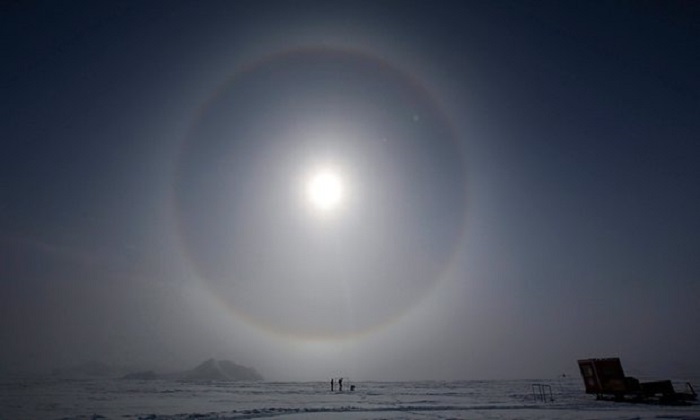The study, published in Science, states that the phase-out of chlorofluorocarbon (CFC) chemicals means that the ozone layer is “expected to recover in response, albeit very slowly.” CFCs, once commonly found in aerosols and refrigeration, can linger in the atmosphere for more than 50 years, meaning that the ozone hole will not be considered healed until 2050 or 2060.
The Montreal protocol, a 1987 international treaty ratified by all UN members, successfully spurred nations to eradicate the use of CFCs in products.
The agreement followed fears that ozone depletion could cause serious health and environmental harm through the ultraviolet light that would reach the surface of the Earth through the ozone barrier. The UN estimates that2m cases of skin cancer a year have been avoided through the phase-out of CFCs.
The ozone hole opened up over the Antarctic due to the vast amounts of cloud that forms over the coldest continent on Earth. This cloud helps the CFC chemicals linger, causing the ozone layer to be eaten away. The void is at its greatest during the southern hemisphere’s spring.
Volcanic activity can also spur greater ozone depletion, as scientists discovered last year when, to their alarm, the largest ever ozone hole opened up in October, measuring more than 20m sq km.
This is thought to be a blip, however, caused by volcanic activity in Chile. When scientists looked at data from September, compared to the same month over the past decade, they found a consistent shrinkage, with the opening up of the ozone hole occurring later each year.
“When volcanoes team up with man-made chlorine, it’s a toxic mix and Antarctica is particularly vulnerable,” said study co-author Susan Solomon, of the Massachusetts Institute of Technology.
“But when we looked at September we saw it was getting smaller. It was pretty cool to see it closing. The chemicals will slowly decay over time.”
The extreme cold of Antarctica is thought to create a “feedback” effect that amplifies ozone depletion, by creating clouds that cause more ozone to be eaten up. The extra ultraviolet light is believed to have caused changes to plankton, but the sparse wildlife in Antarctica, such as penguins, have not been severely affected by the ozone hole.
“If you had to have an ozone hole anywhere in the world, it would be Antarctica because it’s not teeming with life,” said Solomon. “It was the canary in the coalmine that showed us that if we didn’t back off with these chemicals, we’d have a crisis.
“Britain, for example, has around 5% less ozone than it did 30 years ago but it would’ve been twice as bad as that if we didn’t phase out CFCs. There would be problems with skin cancer, eye damage and damage to crops. We made a decision to avert a problem and we ought to congratulate ourselves on that.”
Solomon said she was hopeful the successful eradication of harmful CFCs would be followed by strong international action to avert the worst consequences of climate change.
“Obviously the economics of global warming are different because the fossil fuel industry is worth a lot more in dollars than the companies making these chemicals,” she said.
“But there are important parallels. It was amazing to see how quickly innovation solved the problem with CFCs so we got rid of them yet still have hair spray and air conditioning. We’re starting to see the same thing with global warming. We should look at the ozone problem and realize that nations can get together and come up with solutions.”
More about:
















































